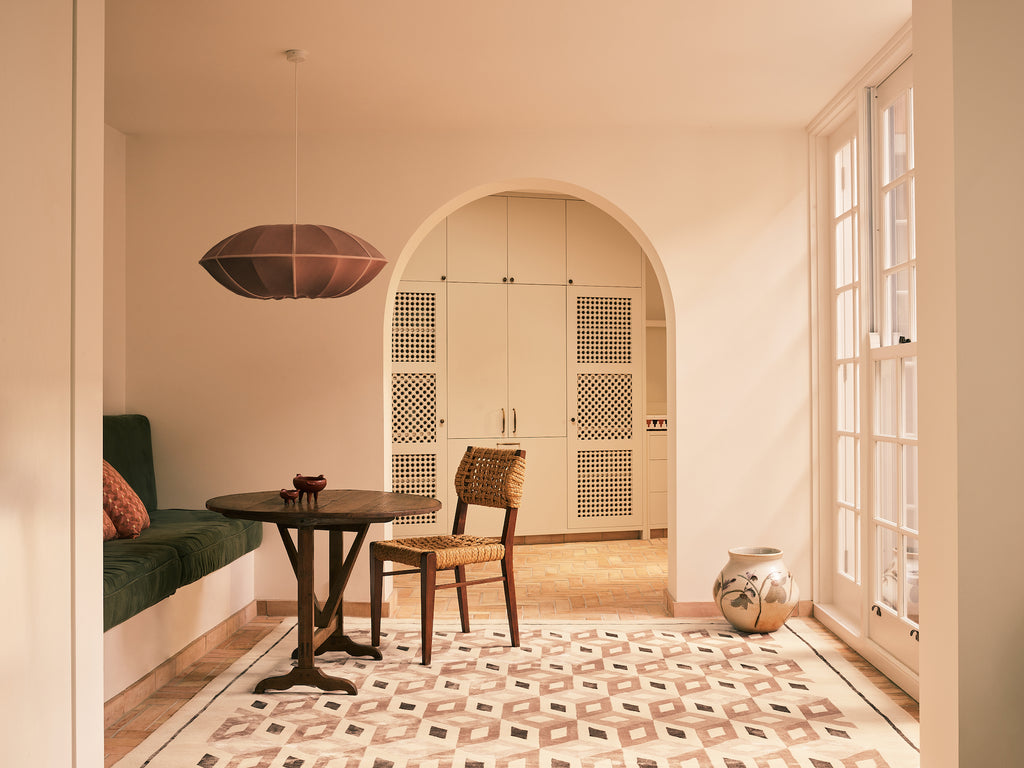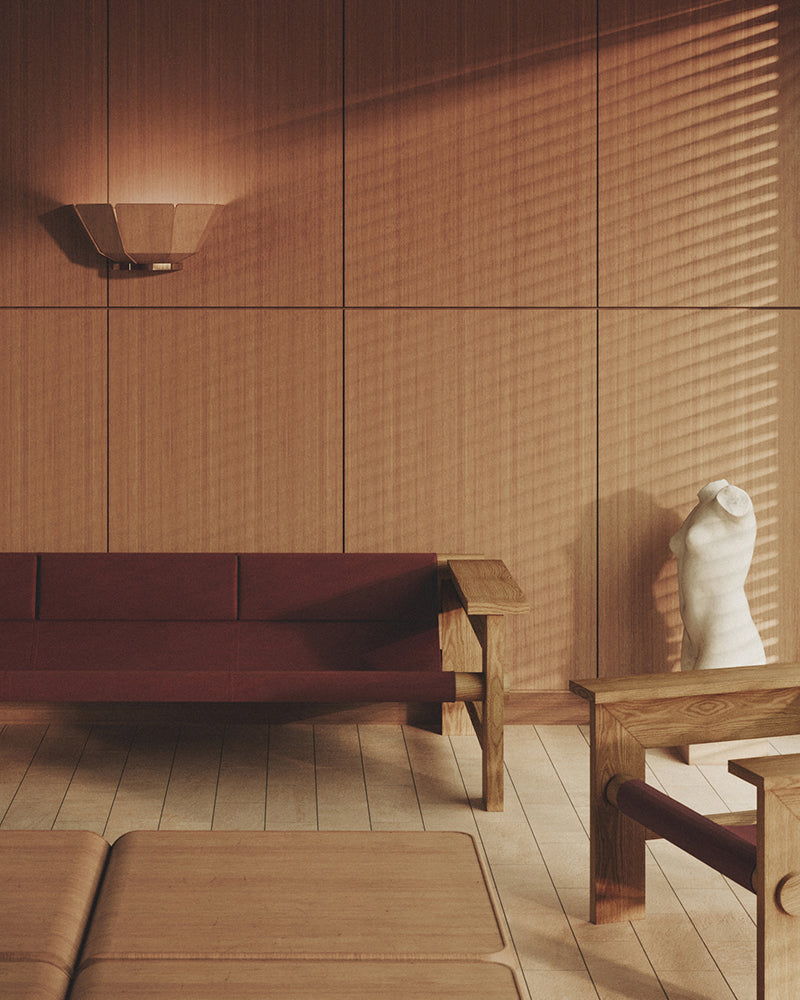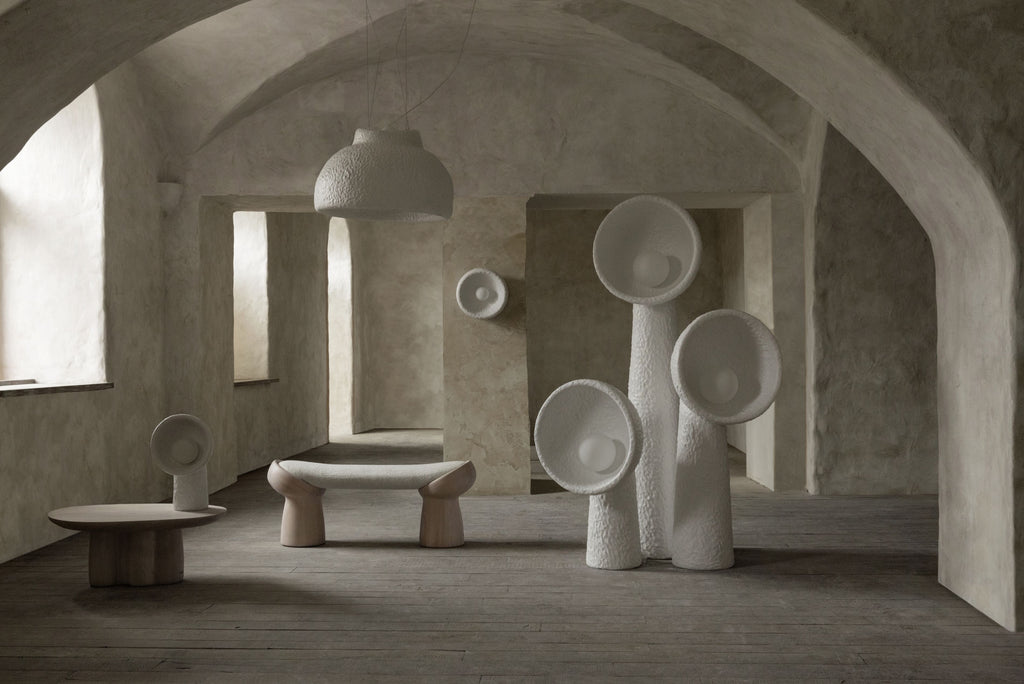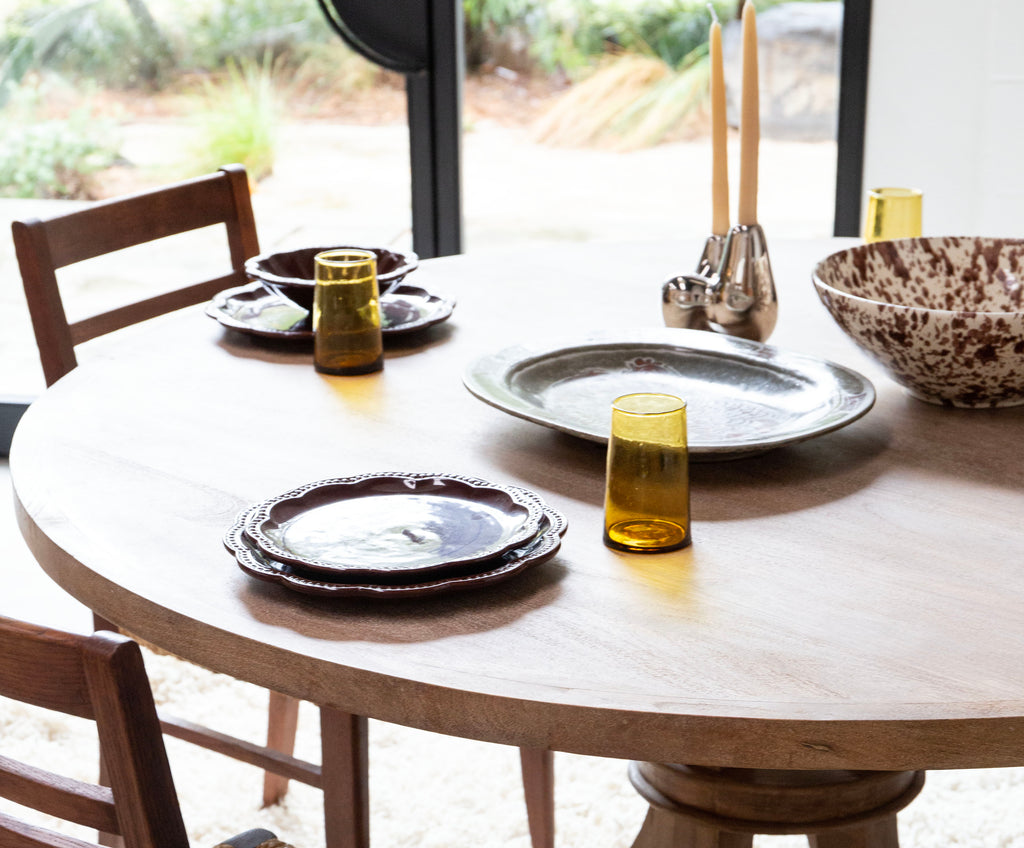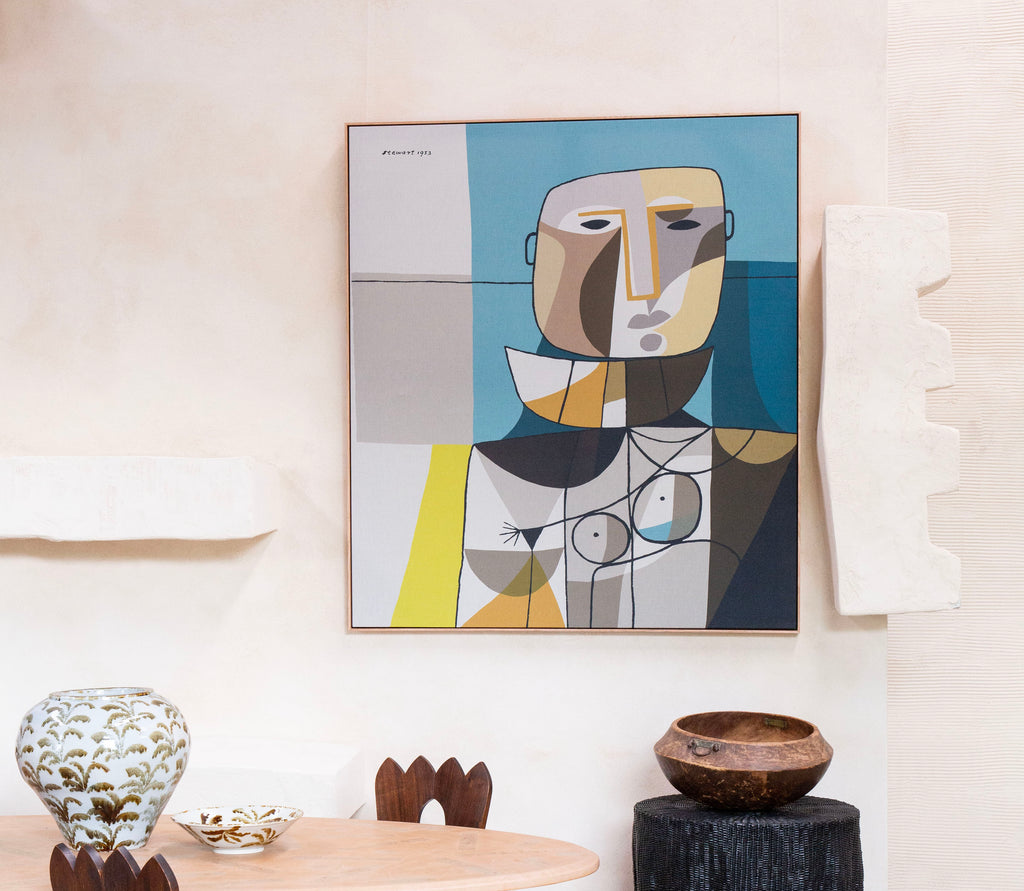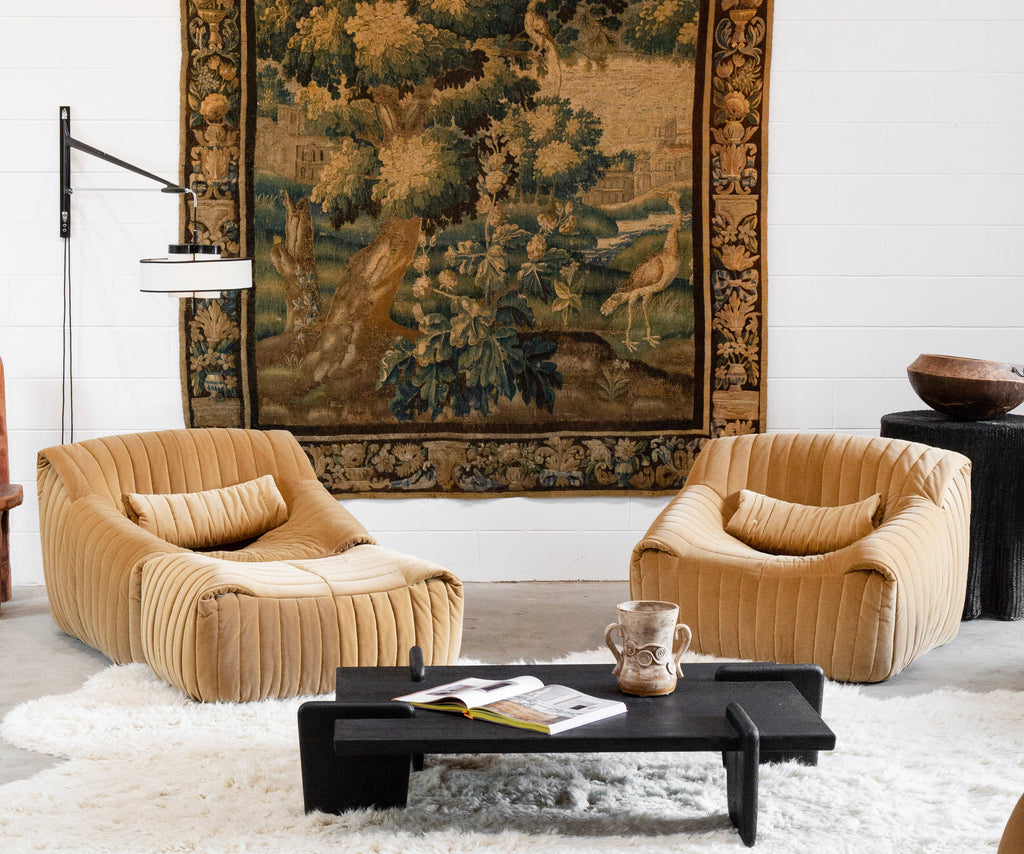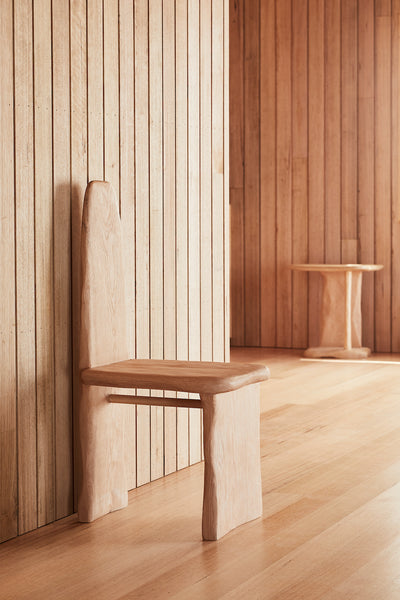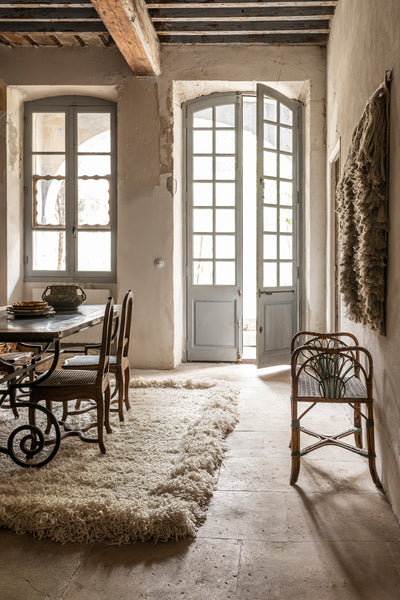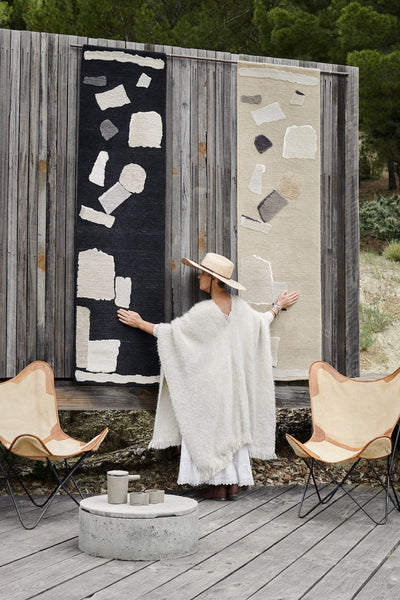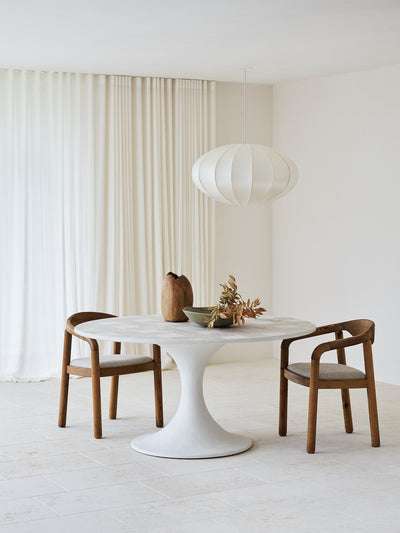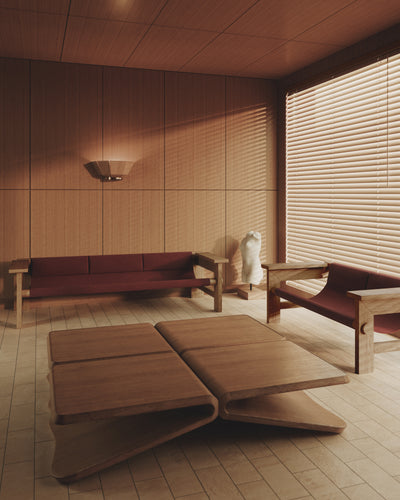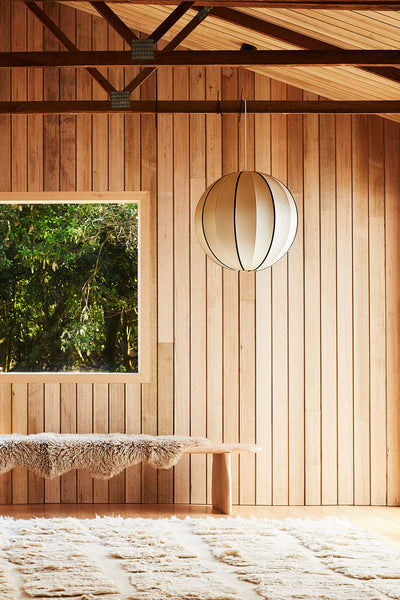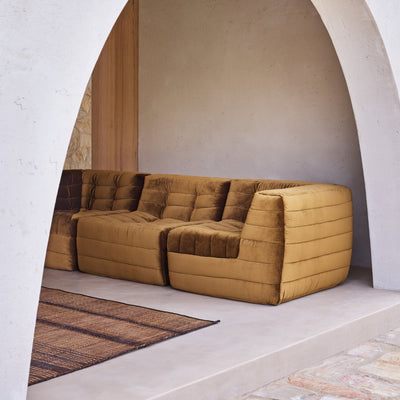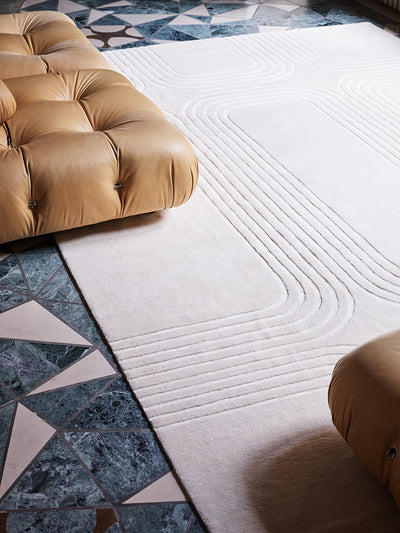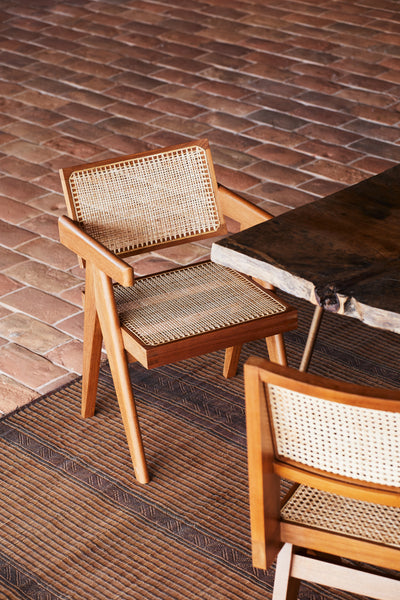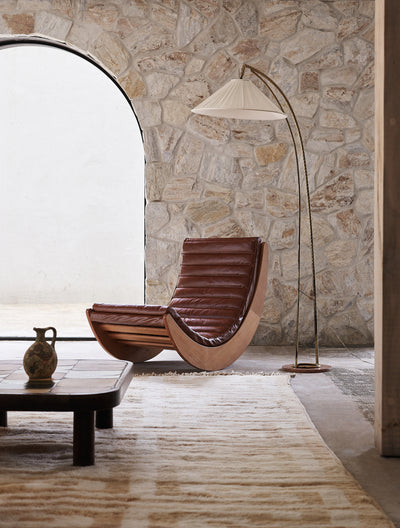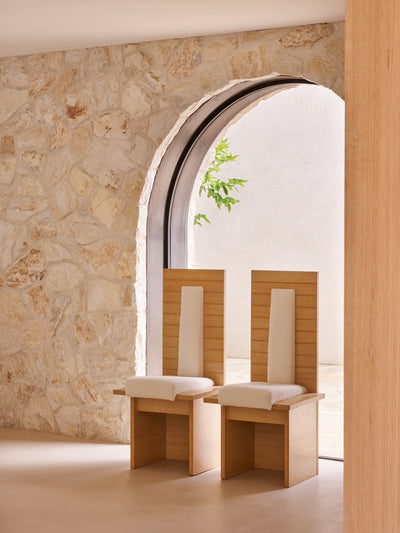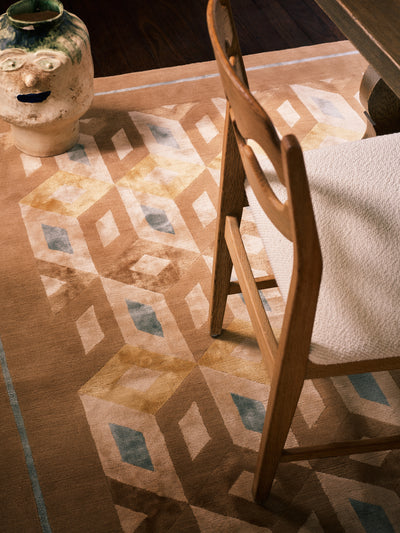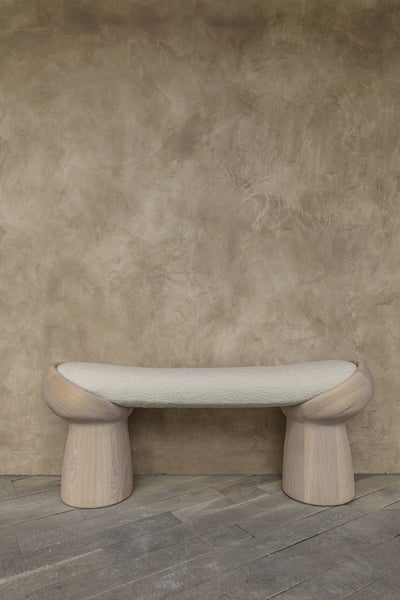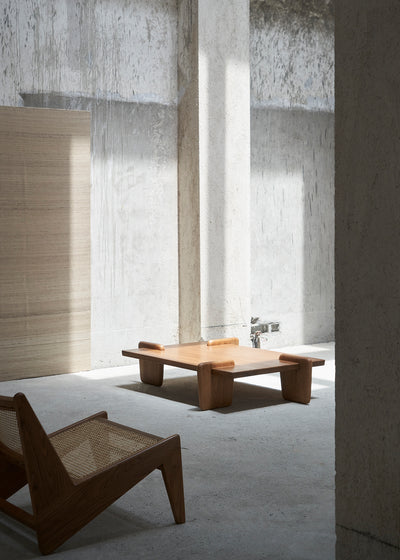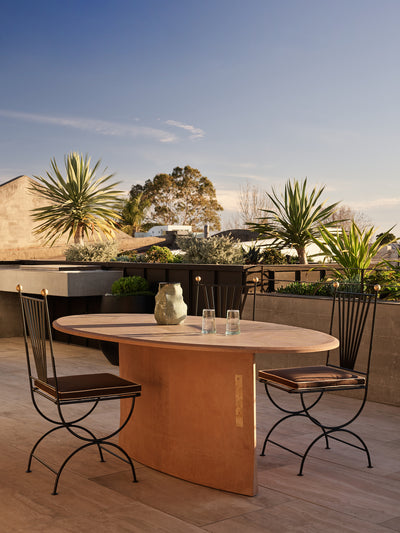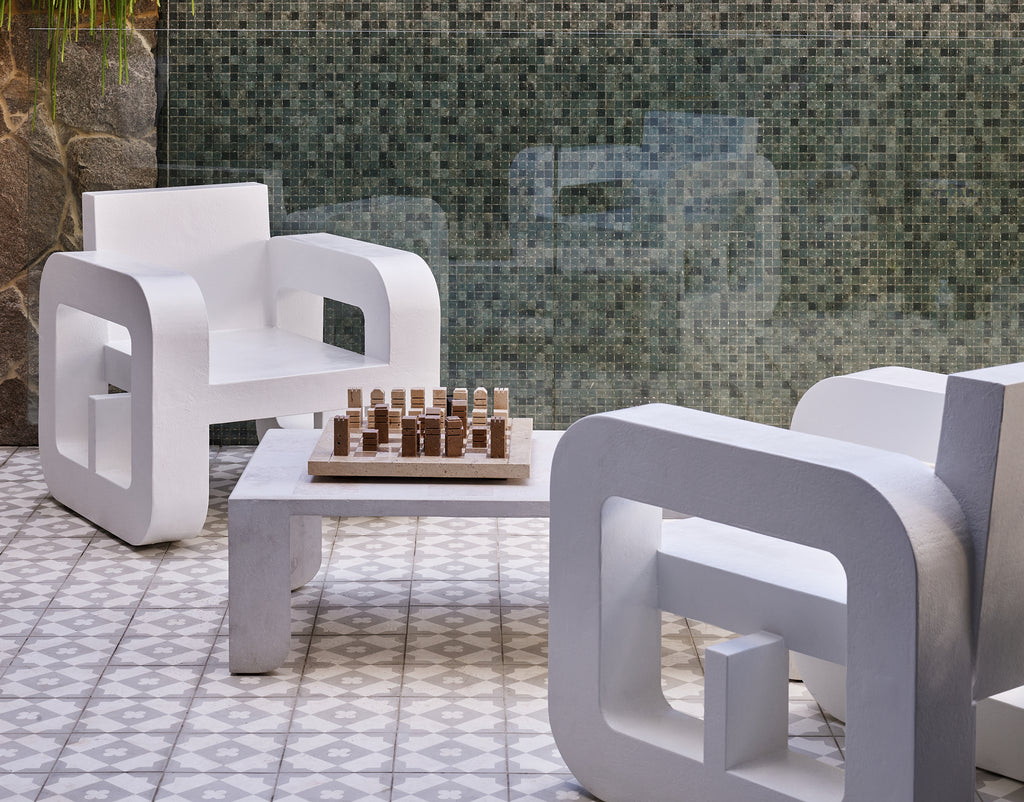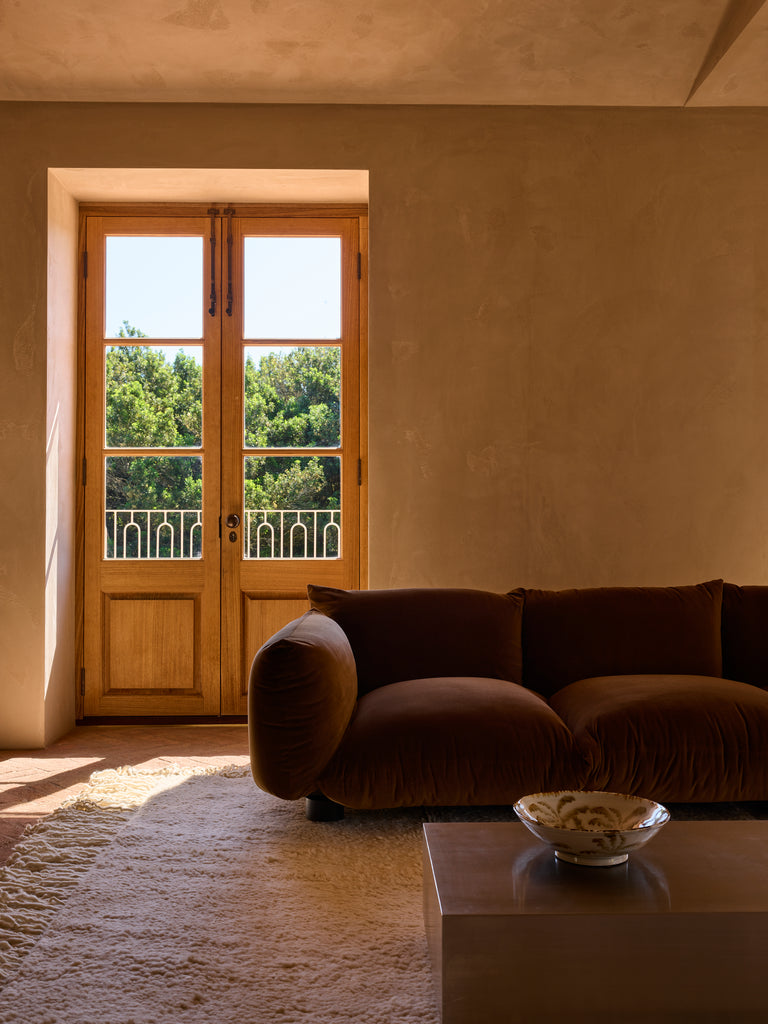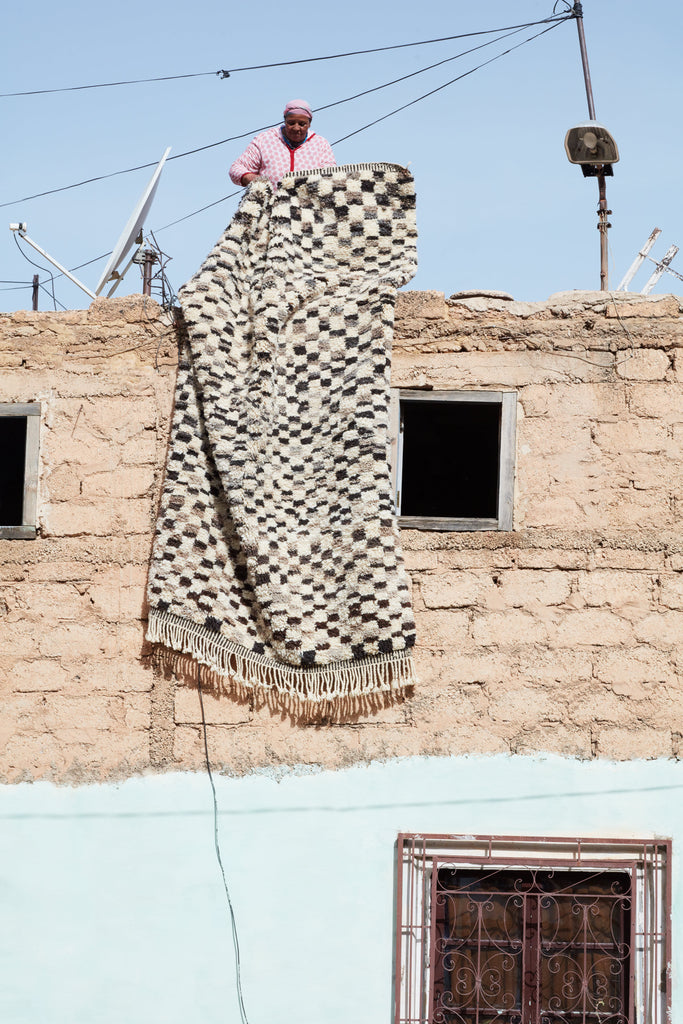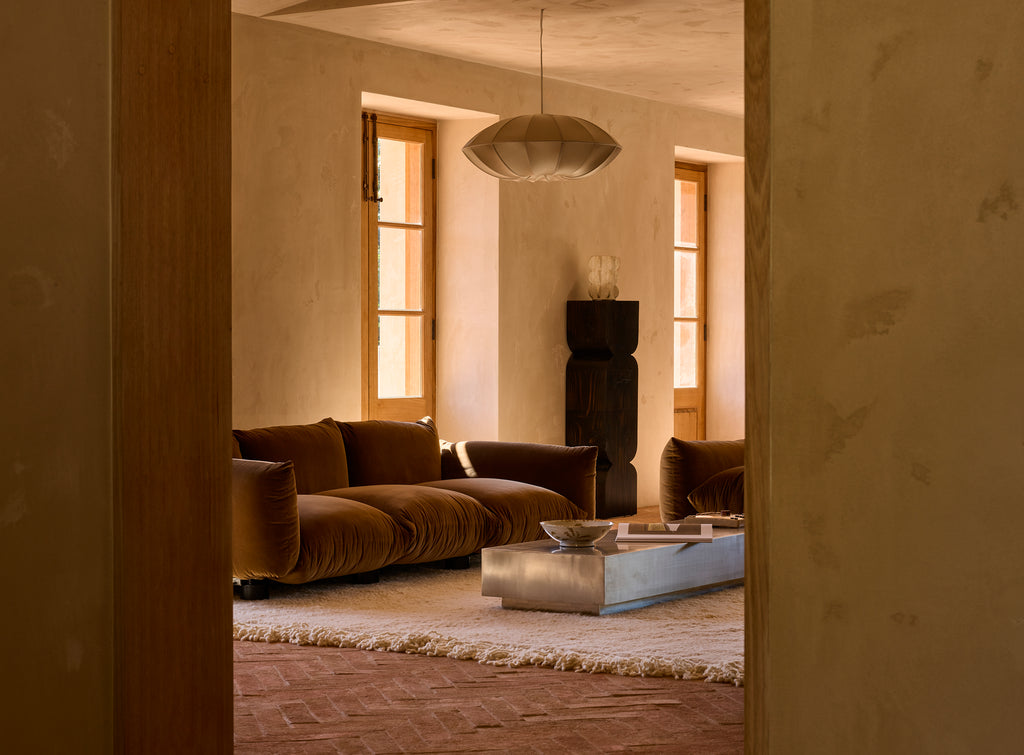
Tête-à-tête
Elementary presence with Studio HAOS.
Lisbon based design house, Studio HAOS have joined Tigmi Brands.
Known for their minimal, yet arresting designs, the French duo create uncomplicated works that hold power in modesty.
On a mission to carve a path away from mass production and overindulgent craftsmanship, designers Sophie Gelinet and Cedric Gepner prioritise exploration, honesty and simplicity in crafting their unique designs.
With a foray into furniture design that was sparked by a single lamp - we spoke with Cedric and Sophie about their unfolding journey, and their ambition to create pieces they hope will add an elementary presence in every space they inhabit.
Can you start by sharing the story behind your first lighting design, and how it led to the inception of Studio HAOS?
Cedric: Sophie and I were pursuing various interests on the side of our daily jobs, and as a couple we had the desire to start a creative project together. We first spent a year or two tinkering with photography, which led us to conduct a couple of personal projects around France and in the north of India. Sophie then started working on the prototype of a ceramic and brass light, it looked interesting so I soon joined in. From what was initially a single lamp we made a collection, and then reached out to the press, got a few publications, started getting some orders, etc. Eventually, and a few objects later, we reached a point where we could both commit ourselves fully to the studio, which was created in 2017.
While you had no formal training in furniture design, did you explore other fields of interest before that you think has helped complement your work now?
Cedric: Sophie has an art school background and ran her graphic design studio for a couple years, so while she had no training in furniture design specifically, she had experience in both creation and visual arts. As for me, I had a business school background but had a strong interest in photography, which is why we first started with that. Ultimately, I believe that when you have a creative mind, and have experience in combining feelings and inspirations to generate new ideas and bring them to life, it can be transposed from one field to another. Specialisation is an artefact of modern times, a couple of generations ago it was most common for artists or scientists to pursue interests or create in different areas.
Your designs are celebrated for their quiet elegance. What draws you to using materials like plywood and sheet metal and what do you think this adds to your designs?
Sophie: We are convinced that pieces made with simple or even ready-made materials can induce a strong emotional reaction and change the way you look at the world. It has been exemplified by many designers and artists, and for quite some time, just think of Gerrit Rietveld and his crate chair, or the works of minimalists such as Donald Judd or Charlotte Posenenske. We also think it’s especially relevant today. That is why put the focus on shape and forms rather than on expensive materials or rare savoir-faires. We are trying to carve a path away both from mechanised mass production and opulent craftsmanship, and by doing so I believe we address concerns of our era.




Can you share an unexpected influence that has shaped your creative process?
Cedric: When we sometimes question the purpose of our work, in the sense that we may rank lower than say, a heart surgeon, we get back to a collection of interviews of French sculptor Auguste Rodin (published under the title “L’Art”). Although we would definitely not take the liberty to define ourselves as artists, we certainly are in an artistic endeavor. In this book he beautifully explains the value that artists bring to society, how through their art, they can provide insight into the human condition, challenge societal norms, and therefore foster a deeper appreciation for life and the complexities of human emotions.
"Ultimately, I believe that when you have a creative mind, and have experience in combining feelings and inspirations to generate new ideas and bring them to life, it can be transposed from one field to another. Specialisation is an artefact of modern times, a couple of generations ago it was most common for artists or scientists to pursue interests or create in different areas."
Along your design journey, can you recount a particular challenge you faced and overcame, which helped you shape your path?
Sophie: Originally from Paris, we moved to Lisbon three years ago to set up a workshop where we can experiment with different ways of making furniture. So we had to transition from a traditional approach, where the designer creates drawings and then handles them to craftsmen or factories, to something more integrated. We opened that workshop a couple of months before our first solo show in New York: we had zero building experience, 500 square meters of empty workspace and quite a few wood and metal pieces to build. Needless to say, it was quite a stressful time, but as a result of this move we now have way more creative freedom and possibilities in terms of experimenting with materials.



In your perspective, what are the defining characteristics that weave through your creations?
Sophie: When we first started the studio, we had little experience and were mostly guided by intuition, discovery and fun. A few years later, intuition is still paramount, but we are more demanding in terms of the meaning of our work. It should say something about our time, and maybe about times to come. Designing is a matter of striking a balance between qualities that we want to express, and ultimately the aesthetics are defined by how the scale tips. As our appreciation of the world and of our own work evolves, so does naturally the style and materials of our pieces. Even though each body of work is different in terms of style and materials, the guiding principles however, such as exploration, honesty and simplicity, are the same.
You are now based in Lisbon, Portugal. How has this home base influenced or added to your studio’s designs?
Cedric: Lisbon happened as an accident. The initial plan was to relocate to Tangier in Morocco, but as the pandemic picked up again late 2021, we decided to make a stopover in Lisbon until things settled. It’s a city that’s hard not to like, and the stopover turned into a long-term installation. The move has influenced our work in the sense that since we have the goal to build all our pieces in our workshop, we have to design them in a way that doesn’t require any external know-how or machinery. That reflects in the choice of materials, in the assembly choices, in the finishings, and all that contributes to creating a distinct aesthetic.
Tigmi translates to ‘my home’ in the Berber language, what do you hope your designs bring to their future homes?
Cedric: I hope they bring some kind of elementary presence to the room.
What exciting endeavours or projects can we anticipate from Studio HAOS in the near future?
Cedric: We are currently working on transforming part of our workshop into our home. It’s the first time we have to think in terms of architecture, volumes, light, etc. rather than objects, and of course mixing life and work spaces comes with its own challenges, so there is a lot to learn and it makes it very exciting.
_
Tigmi are the exclusive stockists of Studio HAOS in Australia.


